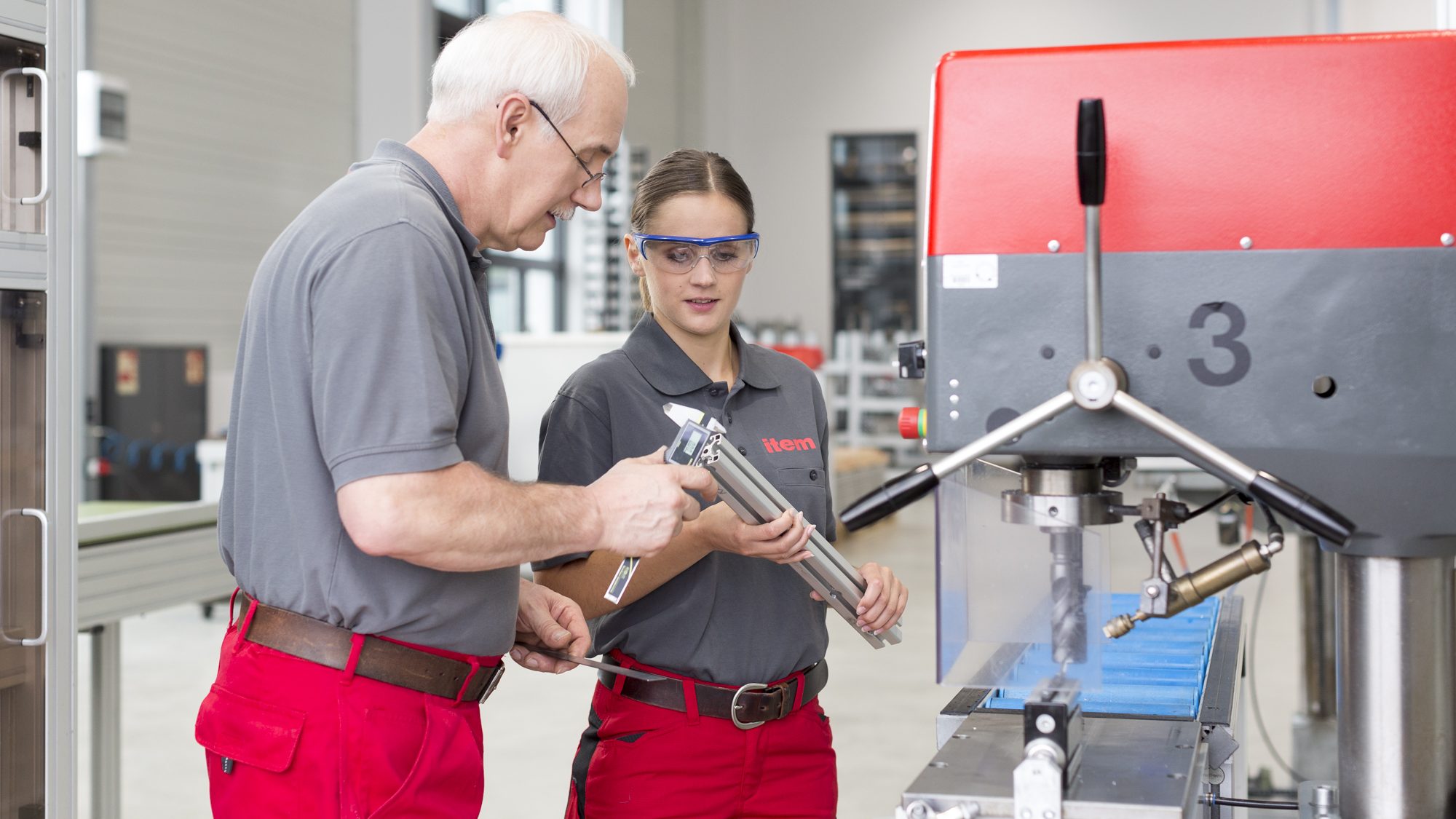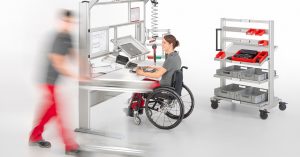When given the right support, older employees can harness their full potential and offer businesses significant added value.
Demographic changes are simply shifts in the age structure of the population. Due to low birth rates and ever better health care, the population is getting older. At the beginning of 2017, 21.2 percent of Germany’s overall population were over 65 and from 2020 onwards, the working age population will significantly decline (i.e. those aged between 20 and 65). But Germany is still in a good position compared to other countries. According to the latest Golden Age Index, which examined 34 countries, 70 percent of those aged 55 to 64 and fit for work in Germany were in a job that paid above the national insurance threshold in 2017. So, although older employees certainly have bright prospects on the German labour market, employers in industry ought to look at how older employees’ needs are being addressed and whether areas such as production are equipped with age-appropriate workstations.
Why older employees are a company asset
Young recruits are expected to be much more productive and therefore outshine seasoned veterans.
Older workers are in no way destined for the scrap heap. Those who have been in work for decades are highly qualified at what they do and possess a lot of life experience. So why are a lot of employers hesitant about hiring them? Well, this is in no small part down to age-related stereotypes. Young recruits are expected to be much more productive and therefore outshine seasoned veterans. In most cases, the reality is very different. Neuroscientists, for example, have shown that older workers are often at an advantage and can tackle jobs faster than their younger colleagues due to their knowledge and experience. Ultimately, junior colleagues can only benefit from their elders’ vast wealth of experience.
Age-appropriate work benches in production offer many benefits
If we look at current demographic developments and the benefits offered by experienced workers, it’s evident that companies need to take action. It’s not uncommon for highly qualified employees to have to give up their position earlier than planned because the workplace is unable to accommodate their particular limitations. The business then loses out on this valued employee’s skills – even though this usually could have been avoided. In addition to offering further training and assistance, companies can support older employees by providing barrier-free work benches. The concept of barrier-free work bench design doesn’t just take into account the needs of those with a disability – older workers with orthopaedic problems, restricted mobility or gradual sight loss stand to reap enormous benefits, too.
Only supporting those who are already likely to develop physical problems isn’t enough.
After all, there are ways to tackle such typical age-related issues. Barrier-free, age-appropriate work benches in production, for instance, can be customised and equipped with lighting that prevents eye strain. Many experts believe measures like these make a company “resistant” to demographic change. You can spot such companies by the ergonomic equipment in their production facilities that prevents employees developing health problems – enabling them to enjoy their work for many years to come. But providing age-appropriate work benches and only supporting those who are already likely to develop physical problems isn’t enough. Young employees should also have access to ergonomic work benches to boost and maintain their productivity in the long run.
Are you interested in ergonomics and accessible solutions that break down barriers? Then we have something that might just help! Simply subscribe to the item blog by completing the box at the top right!





